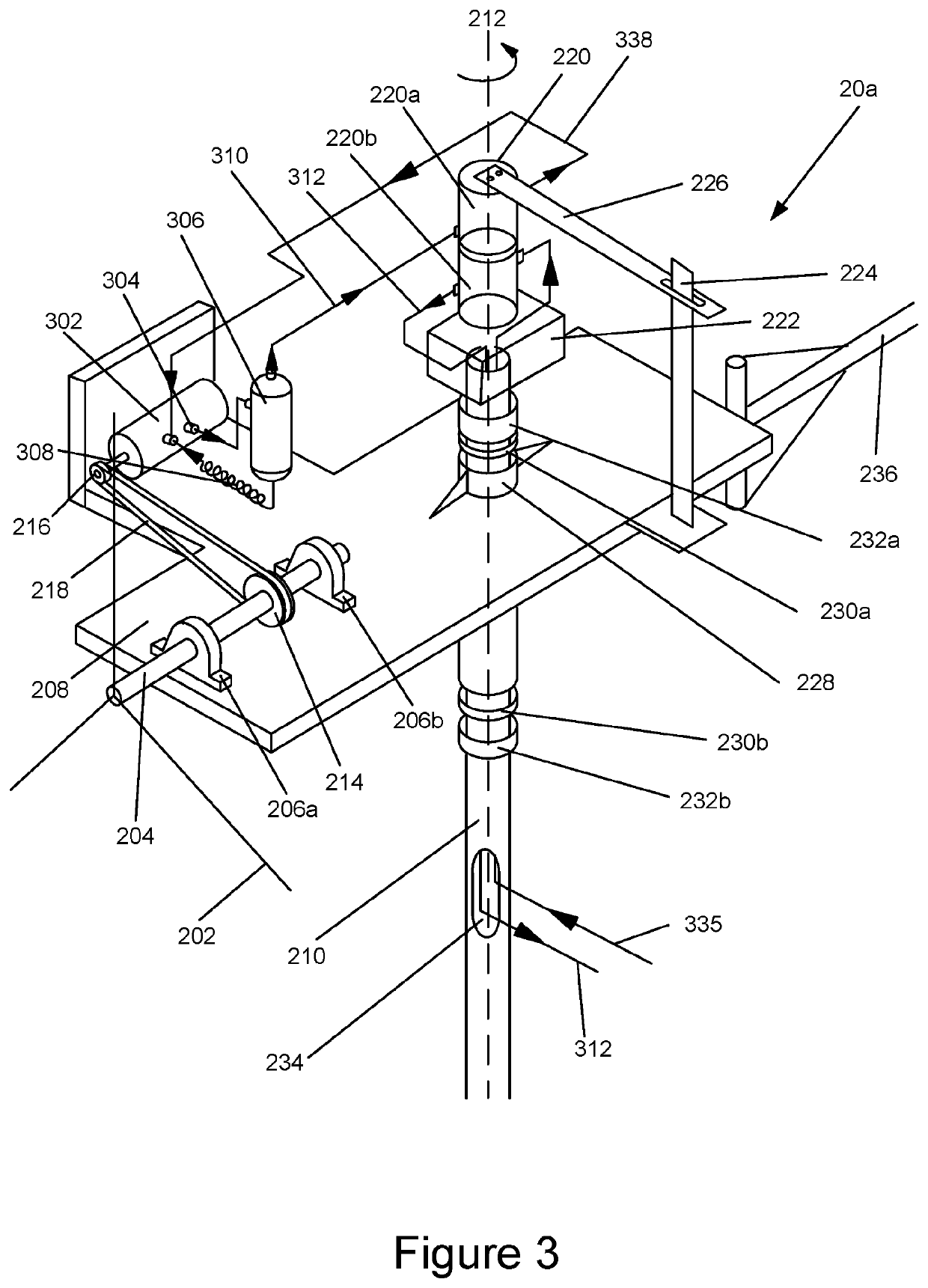Wind powered cooling system
a cooling system and wind power technology, applied in the field of wind power cooling systems, can solve the problems of large amount of carbon dioxide emissions, large energy consumption of such systems, and occupants' discomfort, and achieve the effect of reducing the entanglement of conduits
- Summary
- Abstract
- Description
- Claims
- Application Information
AI Technical Summary
Benefits of technology
Problems solved by technology
Method used
Image
Examples
Embodiment Construction
[0049]The system 10 shown in FIG. 1 is for cooling air powered by the wind's kinetic energy. The system 10 can be used to cool indoor spaces 26 or outdoor spaces such as the adjacent space around the exterior of a residential home or a beach side resort.
[0050]Additionally, when used in humid climate conditions, the system 10 can be used to produce potable water obtained from condensation of the air's moisture. For example, the potable water from system 10 can be used as an alternate source of water in developing countries with a lack of access to clean potable water. The potable water can also be used for farming in arid regions and raising crops which are not water intensive.
[0051]The system 10 can also used as an alternative to convention cooling devices like air conditioners or dehumidifiers which are powered by fossil fuels. Advantageously, the system 10 provides lower operational costs compared to conventional systems which may result in high utility bills.
[0052]As particularly...
PUM
 Login to view more
Login to view more Abstract
Description
Claims
Application Information
 Login to view more
Login to view more - R&D Engineer
- R&D Manager
- IP Professional
- Industry Leading Data Capabilities
- Powerful AI technology
- Patent DNA Extraction
Browse by: Latest US Patents, China's latest patents, Technical Efficacy Thesaurus, Application Domain, Technology Topic.
© 2024 PatSnap. All rights reserved.Legal|Privacy policy|Modern Slavery Act Transparency Statement|Sitemap



